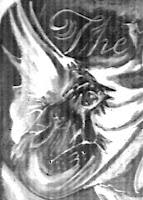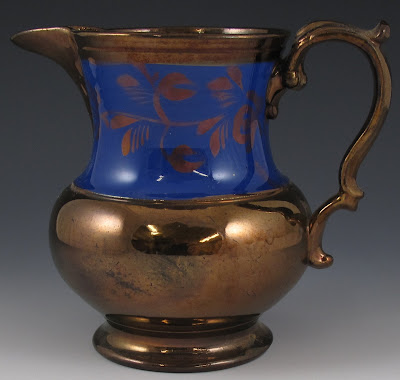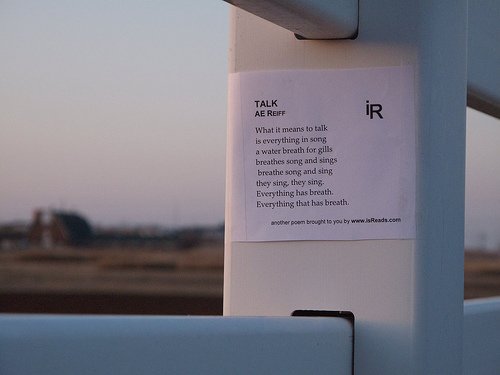Pennsylvania Dutch Paradise
There are glimpses of American Indian notions of natural relation in the Pennsylvania Dutch sectarian, the Mennonite view of the world. Whether this can be proved from their words remains to be seen, but in their art we take as a given that it is already proved. From habit we cite three current works:
Ellen J. Gehret. This is the Way I Pass My Time, on show towel decorations,
Mary Jane Lederach Hershey. This Teaching I Present: Fraktur from the Skippack and Salford Mennonite Meetinghouse Schools.
Monroe H. Fabian. The Pennsylvania-German Decorated Chest.
Fraktur is a species of language flower assumed impossible, "...one basic fact must be underscored in studying these documents--the illumination was auxiliary to the text" (Weiser, "Piety and Protocol in Folk Art," 1). Such divorces need understanding. We want a closer relation of illustration and text.
Fraktur occurs in baptismal certificates called Taufschien, mostly printed, and freehand letters of reward and instruction, vorschrift, given to children. Until Hershey's Teaching (2003) there were few good reproductions. In a similar manner Blake's watercolors were hidden from public eye until the Princeton editions and the Blake Archive, although inferior reproductions existed. The essentially different genres of Taufschien and vorschrift, with the division of art from text, also mirror the divided demographics of the Pennsylvania German, 90% "churched" so called, Lutheran and Reformed, 10% Mennonite and Anabaptist. The "churched" have assumed proprietary status over the whole by their majority status, but are often outweighed by the social/political acts of the Mennonites. This sibling rivalry impacts all discussion. There are yet no online illuminated fraktur as there are with Blake.
Pennsylvania Fraktur art taught the alphabet to children, but when the actual letter strokes mimic the same strokes in the designs of flowers in the composition, this teaching becomes a kind of Calligrammes or a species of a hand drawn vispo, a flower of the hand and mind. Letters, alphabets, numerals, the colors and shapes in Plate 60 of Hershey's This Teaching, "Ihr Kinder Wolt ihr Lieben," ("O Children Who Are Loving") are woven to attract the child, now the adult, to contemplate the text with the art. This particular design is attributed to Jacob Gottschall (1793). The text, "O Children" is a hymn of Christopher Dock's, appropriately addressed to children, he a schoolteacher. At least among Mennonites fraktur was child art, designed for children, sometimes executed by children, colors and floral designs intended for the child's eye. How could it be high art, made by teachers and their students? It is folk art, famously so, but the involvement of children parallels Blake who is our literary schoolmaster. We paint the drawing with words.
A vine, a "stem" of tulips germinates from a globe/seed in the right hand corner, spreads up and to the left. Another bloom of this "plant," slightly unconnected and larger, blooms down from the top left, as though rooted in air, coextensive, but separate from the vine. This second larger bloom mimics the colors and shapes of the capitals of the title, Ihr Kinder in rose, blue and gold stripes, as though the letters were flowers or the flowers letters.The upstroke of the blue I combines with the down stroke of the rose h, making three letters out of two, which elision seems designed. The larger blooms have smaller dark stems, air borne, unrooted. A current of air lifts through the "letter petal" leaves, from right to left. It "blooms" in two large four-chambered blossoms, penetrated by segments of the unattached vine through each center of the four chambers (circles) of the flower, covered by a cross hatched red and gold diamond, Hershey's "checkerboard."
so ubt was freude worth...
Erquicken Hertz und muth
[The practice of joy...
quickens hearts and minds.]
[The practice of joy...
quickens hearts and minds.]
Several phonetic cognates sound like English.The immediate short lines and rhymes are not felt in translation.This verse is not a slogan from twentieth century wars. The vine that springs from the seed at the lower right flows across the top of the page, which seed, translated, says, "Be with us, on all our ways / Dear God with thy blessing," which blessing, rises in the vine. The title words Ihr Kinder, underlined in gold, resemble the block style of Dock's fraktur, intersect the center of the page, divide the text below from its flower above, as if a flower of the text rises from the word garden. Language flowers teach the children to identify petal letters. The writing of the text below occurs in thirteen long cursive lines, its stanzas identified only by numerals 1 to 5, set in a hand so small the students must have known the hymn by heart. A child art, the colors, floral designs intend to attract the eye.
Language In Voices Out
Drops
Words are an image of every thought,
sound and sense, taste and color felt,
Words are an image of every thought,
sound and sense, taste and color felt,
that swim in an ocean that resembles itself,
drawn up in air to eye and ear
that evaporate and fall from sky.
Seen as drops that were no such at all,
gathered in buckets, these drops make words.
“To show the fly the way out of the fly-bottle” (Philosophical Investigations) – Wittgenstein
"Wittgenstein thought that the pursuit of philosophy in its traditional sense is pointless. Philosophers who scoured far and wide for a structured logical form applicable to everything were deluded and wasting their time, much like a fly who constantly tries to escape a transparent bottle by banging against the side. Wittgenstein saw it as his job to show these tenacious philosophers out of the top of the fly-bottle and to see philosophy for what it really is – a futile attempt to find an all-encompassing logical form of thought behind the mess that is ordinary language…"
Thought is the simultaneity of memory, reality, fantasy, being.
There is a lot said of the two voices In and Out. Inner and outer, the most simple saying, like language cannot simultaneously express wave and particle motion. If the wave is both so is the being. Poets want to hallow thought by resort to "a new language," asserted of Beissel's mysticism (by Bach) as much as of Boehme. Poets want to speak revelations like prophets on their own terms. Steve McCaffery and Karen Mac Cormack (end of the interview) want their voices to be an "idea, already implicit in Aristotle’s description of the two voices (articulate and inarticulate) [and] obtains almost a pataphysical excellence!" Pataphysical means imaginary, an imaginary solution to an imaginary problem. On the same page Mac Cormack gets pataphysical, says "Voice is a tangled mythogeme," that "poetry’s primal scene as that of inspiration involves at its base a fundamental “other” voice, a voice speaking through one. This image of the poet as a passive, possessed mouthpiece of an alien voice runs from Plato’s Ion through to Jack Spicer’s poetics of dictation."
Speaking through is not novel to those who do. Calling it alien is more theater than belief. It's not alien if endemic and indigenous, meaning from within the speaker's life. Indigenous means the same but more of community or ethos, Hopi or the Pennsylvania Dutch. WhateverWalt Whitman says comes from his own peculiarly driven mind even if spoken with the voice of the Upanishads. A new language does not imply new ideas, facts. Some writers, Barthes, Agamben see the alien voice as the voice of death, "the originary place of negativity" and "...language is a negativity, the unsayable and the ungraspable" (Agamben) and cannot but be negativity unless it never existed. The thought goes, then, "only if language no longer refers to any voice...is it possible for man to experience a language that is not marked by negativity and death" (Dillon, Politics of Security, 115). But the voiceless verb, the silence of unknowing that passes as world class originality to the rest seems suicidal.
Is language pure thought? There is no language of protons. The universe is thought, but it is not language. Thought itself is not language. The last paragraph of the interview "distinguishes an animal voice (a voice of sonic continuum) from a human voice (a voice of sonic articulation).... The animal voice, Hegel claims, is pure sound, empty and grounded in negativity... every animal finds its voice in its violent death; it expresses itself as a removed self.” You think Hegel ever left his house? Mayhap every animal finds its voice in praise of life. Sometimes the man speaks with animal voice, body voice, as with moans, cries, but the man is the one removed. Assuming to be proved that he is removed, "By intercepting this animal voice of death and subjecting it to articulation, human language, he says, emerges with two decisive characteristics: (1) it retains within it the voice of death; (2) it becomes the voice of consciousness thereby converting negativity into being. To me signals a fundamentally poetic quality in Hegel’s thinking, establishing as it does its mythogeme of “voice” on the codification of vowel and consonant as respectively animal and human." (46). Too many vowels, drugs, disease, or disaffections?
The death of the author (Barthes) in all this is simple speech. To speak as a bear, fly like a bird, leap like a cat is voice without language or sound. In voice as action these philosophers could write a bestiary of themselves. A bestiary of vowels. It comes down neither to voice or language but to breath. Everything that has breath. Comic cosmic bestiaries pronounce linguists and philosophers slandering the animal to justify a human malaise.However the poet is passively speaking, not in speaking the voice of death, is transfiguring life.
But negativity so converted reverses life. The notion that human language is the voice of death, because derived from the animal symbolizes how species' extinction translates from the commercial into the philosophical, as if Hegel never left his house to walk in the woods. Beyond carnivores, it is not the voice of death in the song bird or elk, it is the voice of the joy of life. Somewhere it says that everything that has breath praises. This is being posted on the phone poles of Nashville. Praise is the song of animal speech, the tongue of life not death.Speaking through is not novel to those who do. Calling it alien is more theater than belief. It's not alien if endemic and indigenous, meaning from within the speaker's life. Indigenous means the same but more of community or ethos, Hopi or the Pennsylvania Dutch. WhateverWalt Whitman says comes from his own peculiarly driven mind even if spoken with the voice of the Upanishads. A new language does not imply new ideas, facts. Some writers, Barthes, Agamben see the alien voice as the voice of death, "the originary place of negativity" and "...language is a negativity, the unsayable and the ungraspable" (Agamben) and cannot but be negativity unless it never existed. The thought goes, then, "only if language no longer refers to any voice...is it possible for man to experience a language that is not marked by negativity and death" (Dillon, Politics of Security, 115). But the voiceless verb, the silence of unknowing that passes as world class originality to the rest seems suicidal.
Is language pure thought? There is no language of protons. The universe is thought, but it is not language. Thought itself is not language. The last paragraph of the interview "distinguishes an animal voice (a voice of sonic continuum) from a human voice (a voice of sonic articulation).... The animal voice, Hegel claims, is pure sound, empty and grounded in negativity... every animal finds its voice in its violent death; it expresses itself as a removed self.” You think Hegel ever left his house? Mayhap every animal finds its voice in praise of life. Sometimes the man speaks with animal voice, body voice, as with moans, cries, but the man is the one removed. Assuming to be proved that he is removed, "By intercepting this animal voice of death and subjecting it to articulation, human language, he says, emerges with two decisive characteristics: (1) it retains within it the voice of death; (2) it becomes the voice of consciousness thereby converting negativity into being. To me signals a fundamentally poetic quality in Hegel’s thinking, establishing as it does its mythogeme of “voice” on the codification of vowel and consonant as respectively animal and human." (46). Too many vowels, drugs, disease, or disaffections?
The death of the author (Barthes) in all this is simple speech. To speak as a bear, fly like a bird, leap like a cat is voice without language or sound. In voice as action these philosophers could write a bestiary of themselves. A bestiary of vowels. It comes down neither to voice or language but to breath. Everything that has breath. Comic cosmic bestiaries pronounce linguists and philosophers slandering the animal to justify a human malaise.However the poet is passively speaking, not in speaking the voice of death, is transfiguring life.
The Medium of Thought
What are the languages of the in and out? There is no language of In. To call thought "language" is a metaphor used only because there is no language of thought. Thought is cast into language by speech, translated by voice when speech occurs. This translation is magnanimous. It assumes the end of the beginning. I speak therefore I think. Thought is not languaged. Its exploration must occur between people after it is translated to language when the presumption occurs that it is language. It is a glaring assumption that I speak what I think. The medium of thought is the image.
Postulate
What good is work if the life cannot live? Poets fail in their public and private thoughts. We say life is a work. We say public achievement, action imitated and celebrated, may burn. We say the nature of a poet's death is important as his birth. Then we know what we control. Death is not desired, not suicide or any of diseases, strokes, sicknesses. What is left at the end of a year depends on what theme we follow. All themes merge in each other in memory and thought. Who died young, who of sickness, who of addiction, who was alienated, lost love, found ignominy, prison? The mishaps of necessity gain sympathy.
Suffering makes the soul, binding the book, mistake and limitation art. Suffering is sympathetic when it appears Necessary. Put under stress, see what comes out. Art comes when the farmer's skin cracks. Surgeons do not suffer such defects, but all suffer choices. One is doctor, another a farmer is luck, maybe destined. Desperations escape, things turn on their head. Enough food in some places causes obesity . Too little is too much, the atmosphere, autism is up. If only were the throat of the world unloosed. It is of poets this illumination comes. To find a context for our lives we judge theirs.
Imagine words themselves, spoken the last moment before waking as a cue, to figure out what?
Navajo matriarchy? The imagination of kinship. The phrase occurs in Karl Magnuson's, The World from Within, in an article "The Utopian Imagination of Aboriginalism," in "Virtual Kinship, Real Estate, and Diaspora Formation" and most importantly in the Poetics of the Feminine and that's it.
There is increasing consciousness that kinship lasts materially beyond death. It is said that you know your parents after their deaths and if parents then entire genomes. Is this another case where the thing exists in a way not known before, as is said of consciousness or is it revisting the guest-host codes, reverence of ancestors in patriarchy? Ken Morrison's The Solidarity of Kin (2002), "Toward a History of Intimate Encounters" traces the offer of kinship to the other.
Does it take the inquiry into less aware notions of mythogeme, of notions of Bataille's death of myth which is really birth of anti-myth, new myth?
The good news is some interesting writers are attracted here, Steve McCaffery's, Prior to meaning: the protosemantic and poetics , who applies Prigogine's physics to poetry, just what Prigogine wanted to do.
















